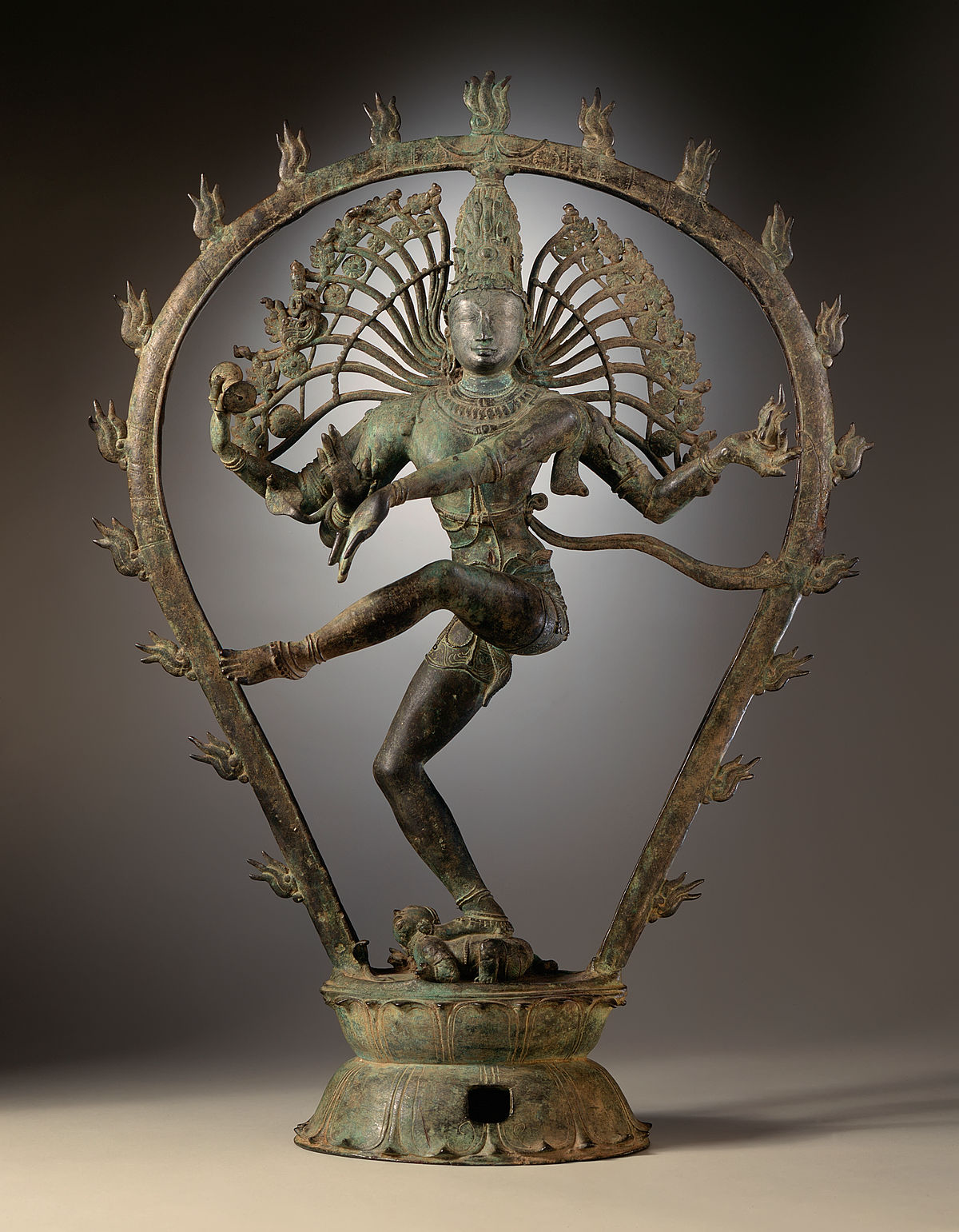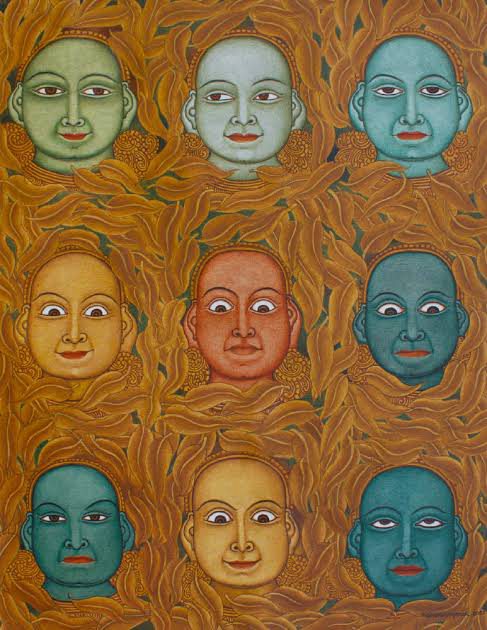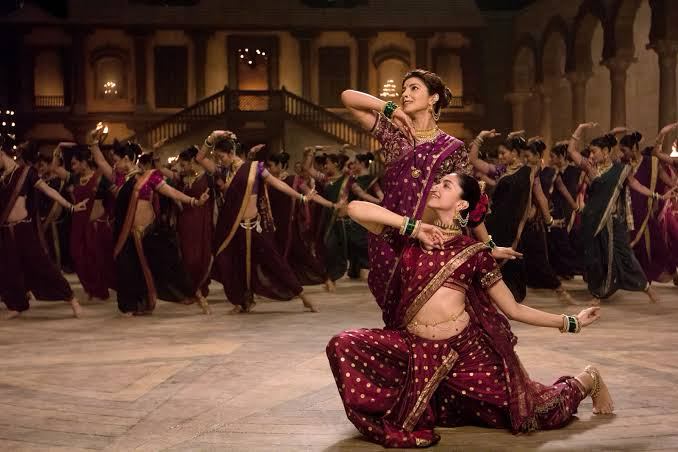Exploring the Natyashastra: How the Ancient Text Describes the Rasas in Indian Aesthetics
- EIH User
- September 5, 2024

Natya (theatre) is an ancient practice of entertainment that has its roots in India. Historical records indicate that this practice existed in the subcontinent even before the Vedic age, with both gods and humans regarded as connoisseurs of art. Scholars believe the golden age of Indian theatre lasted until the 5th century CE, after which the production of Sanskrit drama began to decline. However, despite the recession in dramatic literary reading, performance traditions thrived through dancers, musicians, singers and storytellers. The basic aesthetics of dramaturgy survived and morphed into various variants, through the traditional folk and classical forms. Paul Kurtz suggests that the Rig Veda provides evidence that dramatic theatre emerged in India around the 8th century BCE. He also notes that the Jataka stories, which depict Indian life between 600 BCE and 300 BCE, offer further evidence of the existence of theatre during that period.

(An idol of Lord Shiva performing tandava; Source: Wikimedia Commons)
The Natyashastra is one of the oldest texts on dramaturgy, with scholars dating it back to as early as 200 BCE and as late as 600 CE. Its penning is credited to Bharata Muni, whose identity remains a mystery. The treatise lays out a meticulous account on the rules and principles governing dance, music, drama, theatre, and other performing arts. Considered to be a book ahead of its times due to its inclusion of minute details which others fail to encompass, what differentiates Natyashastra from other texts is that it does not concern itself solely with drama and rather discusses at length about the other art forms and their structural compositions. Natyashastra is often regarded as the “fifth Veda,” with Bharata describing its origin as a divine creation, written at the request of various gods to Brahma.
Bharata Muni extensively discusses various forms of dance, songs, and their diverse movements and gestures. He emphasises that the most significant outcome of any art form or drama is the realisation of rasa by the spectators. Bharata Muni also dedicates considerable attention to female characters, exploring their different types and potentials, and elaborating on how women should be represented. He goes further to define his concept of art, providing a detailed guide on how to bring it to life on stage, including instructions on the use of props and ornaments to achieve the desired imitation of action. As Manmohan Ghosh notes in the Introduction of his translation of Natyashastra :-
“The Natyashastra lays down very elaborate rules as to how the drama is to make mimicry of the exploits of men and their divine or semi-divine counterparts”
At the core of the Natyashastra lies the rasa theory, which forms the heart and soul of all the performances Indian Cinema and Theatre produces. Rasa literally translates to ‘sap, juice, taste and flavour’ and its meaning varies according to the context. In the realm of aesthetics, however, it refers to the cultivated emotional enjoyment and delight experienced by the spectator, evoked through the performance of the actors. Bharata argues that the primary objective of any work of art is to produce Rasa.

(The navaras. Art by Gopi Chevayoor; Source: artspeaksindia.com)
In Indian aesthetics, rasa can be understood as the essence or meaning of a work of art, which manifests as the effect experienced by humans when they encounter its representation or enactment. It represents the ultimate flavour, taste, and meaning of an art form. Spectators experience this pleasure through the emotions conveyed by the performance of actors—through their words, expressions, gestures, and enactments. These emotions are encapsulated in the navarasas, which are vital to Indian performing arts
Rasa is an experience that goes beyond our everyday emotions, like happiness or sadness from getting something we want or need. It is about reaching a deeper, more peaceful state of mind where the self is no longer driven by personal desires or practical concerns. Imagine shedding the ego and all its cravings and becoming an observer, purely contemplating and feeling the essence of something. This state is blissful, not in the sense of ordinary pleasure but as a pure, serene joy that comes from within.
In poetry, Rasa is that unique flavour or emotion the poem brings to life, which is felt deeply by the self in this contemplative state. Even though this inner experience of bliss is one and the same at its core, it takes on different colours depending on the emotion the poem evokes—be it love, fear, bravery, or any other emotion. Thus, a poem is said to carry a particular rasa based on the dominant feeling it expresses. It is like tasting different flavours in food; each poem has its own unique taste that awakens a different kind of emotion in the reader or listener, making them feel and savour that emotion deeply, beyond the everyday rush of life. The Navarasas are as follows :-
- Shringara (love/beauty)
- Hasya (laughter)
- Karuna(sorrow)
- Raudra (anger)
- Veera (heroism/courage)
- Bhayanaka (terror/fear)
- Bibhatsa (disgust)
- Adbuta (surprise/wonder)
- Shanta (peace or tranquillity)

(Bhayanaka rasa being performed in a Bharatnatyam routine; Source: arteducationhub.in)
Additionally, the influence of the Natyashastra on Indian cinema is evident in many films. Taking the example of films like Bajirao Mastani (directed by Sanjay Leela Bhansali) and Jab We Met (directed by Imtiaz Ali), both movies prominently feature the dominant shringara rasa, intertwined with the karuna rasa, which evokes feelings of sorrow. As Hogan notes, “the two most common primary rasas in Indian cinema are the romantic and the sorrowful or ‘pathetic’”. These rasas provide emotional depth, engaging audiences on multiple levels.In these films, other rasas occasionally surface to enhance the overall emotional impact, while the central focus remains on the dominant rasa.
In the case of Bajirao Mastani, the other rasas displayed are raudra rasa (fury) in scenes of conflict, bhayanaka rasa (terror) in moments of fear and anticipation, and vira rasa (heroism) in Bajirao’s displays of bravery. The film closely follows the principles of the Natyashastra in its storytelling, costumes, set design, and background score, effectively portraying various emotions through the characters’ expressions, gestures, and dialogues.

(A still from the film Bajirao Mastani)
Similarly, Jab We Met centres on shringara rasa depicting a love story filled with humour(Hasya Rasa), spontaneity, and moments of personal growth driven by karuna rasa, aligning with the teachings of the Natyashastra. Both films embrace the principles of the Natyashastra, creating a rich tapestry of emotions that resonate deeply with audiences.
The importance and influence of rasa theory is also displayed in the Indian classical dance forms like Kathak and Bharatnatyam. A classical dancer imbues each role with the unique qualities of that character, effectively capturing the diverse range of dramatic situations encountered throughout a performance. The dancer’s portrayal goes beyond mere mimicry, achieving the deeper emotional expressions that define each character. The shift from one character to another is clear, yet remarkably subtle, with the dancer’s body position, gait, movements, gestures, and facial expressions fluidly transitioning from one personality (or even gender) to another within seconds.

(A Kathak performance; Source: Wikimedia Commons)
This seamless transformation creates a dynamic theatrical atmosphere that guides the audience toward the ecstatic experience of rasa. Through this experience, the audience is drawn to focus more on the characters rather than the dancer themselves. With a masterful performer, this transformation is so complete that it evokes subtle emotions in the spectator, allowing them to temporarily transcend their own personal perspectives and experience an elevated state of awareness. This leads to an emotional catharsis, a momentary release of pent-up feelings, and a deeper connection with the performance.
The reliance of Indian aesthetics on the Natyashastra is the undisputed proof of the timeless relevance and profound influence of the text, which continues to serve as a cornerstone of Indian performance. By offering a detailed framework for the presentation of emotions, expressions, and narratives, the Natyashastra provides artists with a guide to evoke the intended rasas in their audiences, creating powerful and transformative experiences. Whether in a classical dance performance, a modern theatrical production, or a Bollywood film, the essence of Natyashastra—with its focus on the experience of rasa—continues to define and enrich Indian cultural expression and stands as a testament to the enduring legacy of India’s aesthetic heritage, reminding us that the emotional and spiritual connection fostered through art transcends time and remains as significant today as it was thousands of years ago.
References:
- Chaudhury, Pravas Jivan. “The Theory of Rasa.” The Journal of Aesthetics and Art Criticism, vol. 24, no. 1, 1965, pp. 145–49. JSTOR, https://doi.org/10.2307/428204. Accessed 1 Sept. 2024.
- Rizvi, Saman. “Locating Natyashastra: The Warp and Woof of Indian Cinema.” Jamshedpur Research Review, vol. 4, no. 60, July-August 2023, pp 10-15.
- Das, Shruti. “Ancient Indian Dramaturgy: A Historical Overview of Bharata’s Natyashastra.” Research Scholar- An International Refreed Journal of Literary Explorations, vol. 3, no. 3, August 2015, pp. 133-140.
- Shah, Purnima. “Transcending Gender in the Performance of Kathak.” Dance Research Journal, vol. 30, no. 2, 1998, pp. 2–17. JSTOR, https://doi.org/10.2307/1478835. Accessed 1 Sept. 2024.
- Ancient Indian theatre rasas
- Exploring rasas in Indian theatre
- Indian aesthetics Natyashastra
- Indian literature on rasas
- Natyashastra and Indian aesthetics
- Natyashastra performing arts principles
- Natyashastra rasas and their significance
- Natyashastra rasas explained
- Rasa theory in ancient texts
- Rasas in Indian performing arts

















